(Text/photos: Victoria Sophie Boije)
It's become common to have robots in our homes, and technology has a significant role in our everyday life. Media Technology Theory and Development is one of the newer courses at the master's degree in Media and Interaction Design at the University of Bergen (UiB) which emphasizes this. The course aims to provide students with critical and creative knowledge of advanced media technology concepts and systems.
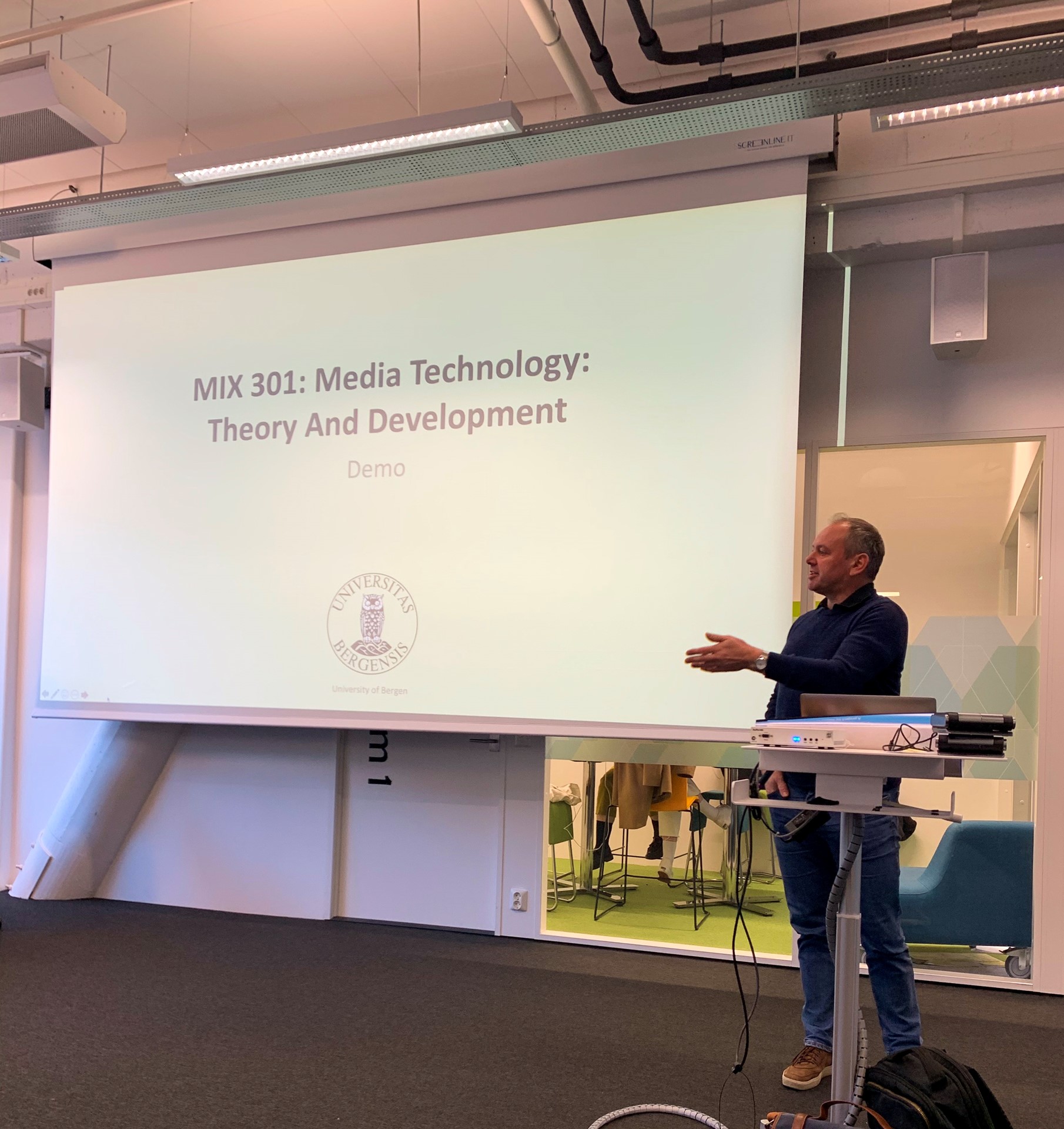 Professor Lars Nyre introducing the Demo Day
Professor Lars Nyre introducing the Demo Day
During the course, the master's students in Media and Interaction Design at the University of Bergen were challenged to make humanoid robot prototypes with a communicative purpose.
Making these robots is something that takes a significant amount of time, hard work and patience. The process starts with a "brain writing", followed by comprehensive testing. During these targeted tests, the students will consider the robots strengths and weaknesses, how the multiple elements works, and which changes that needs to be made to make the robot function.
ICARE – a social health robot
One of the robot prototypes is named ICARE, a social health robot. The robot is intended for people with social anxiety, and for those who have trouble talking to people in general. It is said that worldwide, one in four people will experience a mental health issue in any given time during their life. Many people find it hard to contact health personnel when they need help. That’s where ICARE comes in handy.
- The idea was inspired from my former bachelor’s degree. I experienced that the attendance in lectures were really terrible, and people tended to skip classes due to social anxiety, explains Oda Steinland Skaug. She has developed the demo together with Ida Charlotte Solvig.
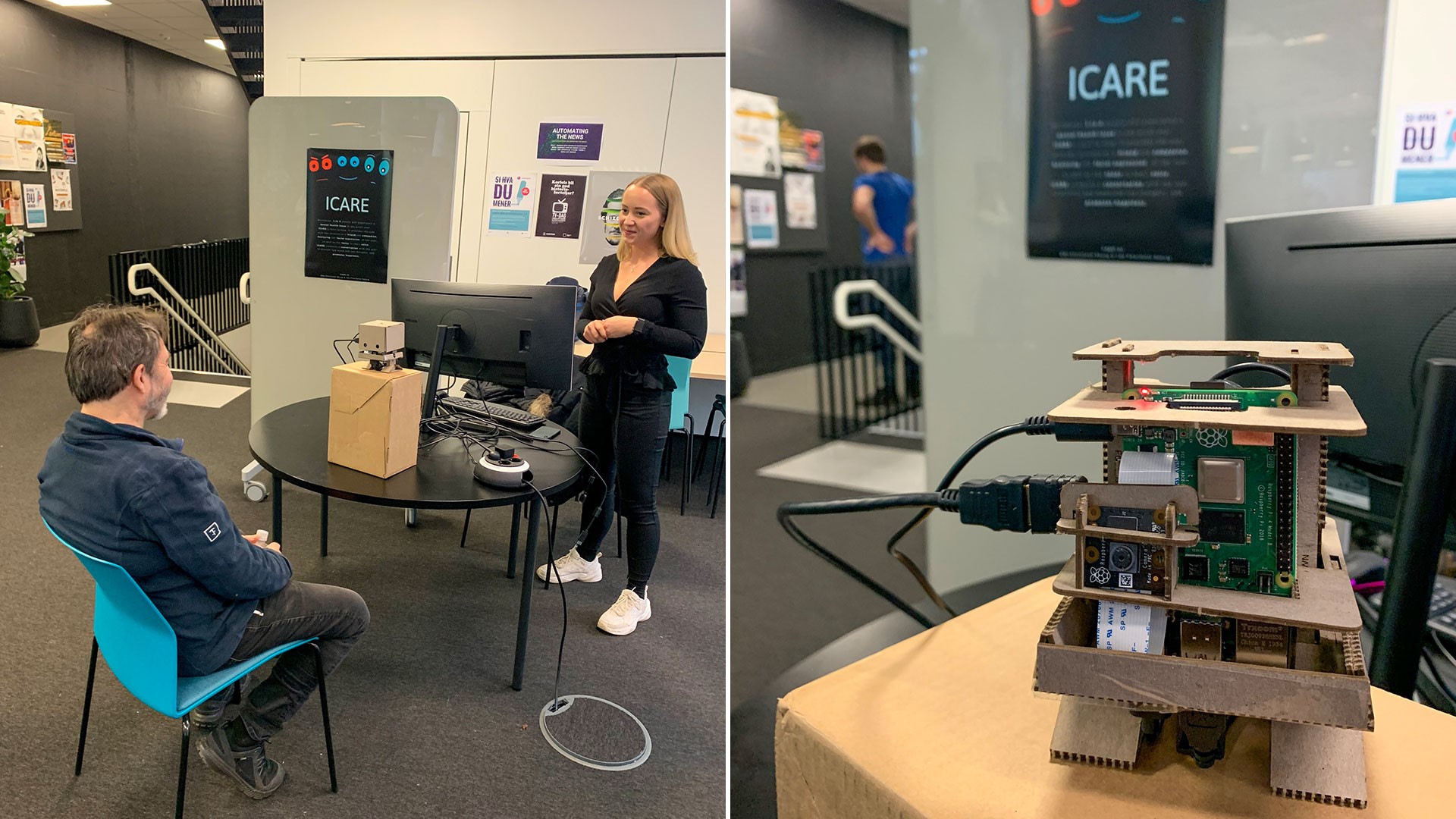 Oda Steinland Skaug demonstrating ICARE. By checking a person's facial expressions, the robot can determine which mood he or she is in, and from there start a conversation.
Oda Steinland Skaug demonstrating ICARE. By checking a person's facial expressions, the robot can determine which mood he or she is in, and from there start a conversation.
Blue-Lightning-Man
Blue-Lightning-Man is a concept of an autonomous social robot that makes decisions on its own and solves real-time problems. It has the ability to recognize moving objects, postures, gestures, to understand its environment, interact with humans and learn from them. It is designed to become a teammate and personal assistant that can co-exist with humans in any given setting.
The goal for Blue-lightning-Man is to be independent and it will learn from its surroundings as it ages, "growing" with its owner to be able to facilitate itself.
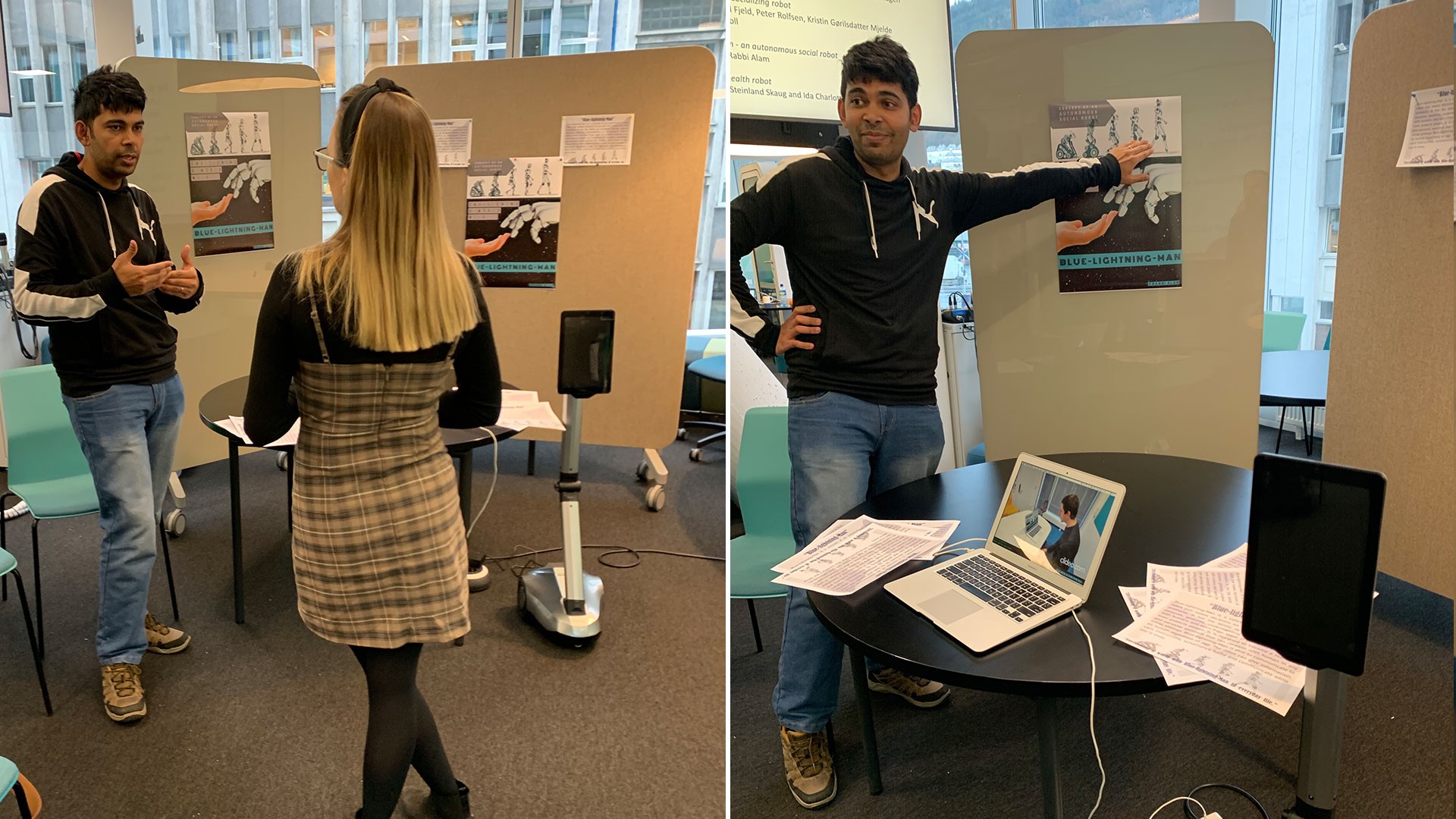 One of the creators of the Blue-Lightning-Man, Fazla Rabbi Alam, demonstrating the solution.
One of the creators of the Blue-Lightning-Man, Fazla Rabbi Alam, demonstrating the solution.
Navigator – a robot that finds its own way
It's more common now to have robots in the home and it is important that they can navigate without running into obstacles.
Three students, with all three working on different projects, teamed up to work on navigation. They developed different versions of Navigator. Their prototype uses its sensors to navigate through rooms and buildings that the robot has no previous knowledge of. One of students had the idea to develop a robot to help people with dementia.
- The aim is to let them live at home, instead of going to elderly homes. The robot's job is to follow them around in their homes, check that they are OK and remind them of tasks, says Stine Olsen Helland.
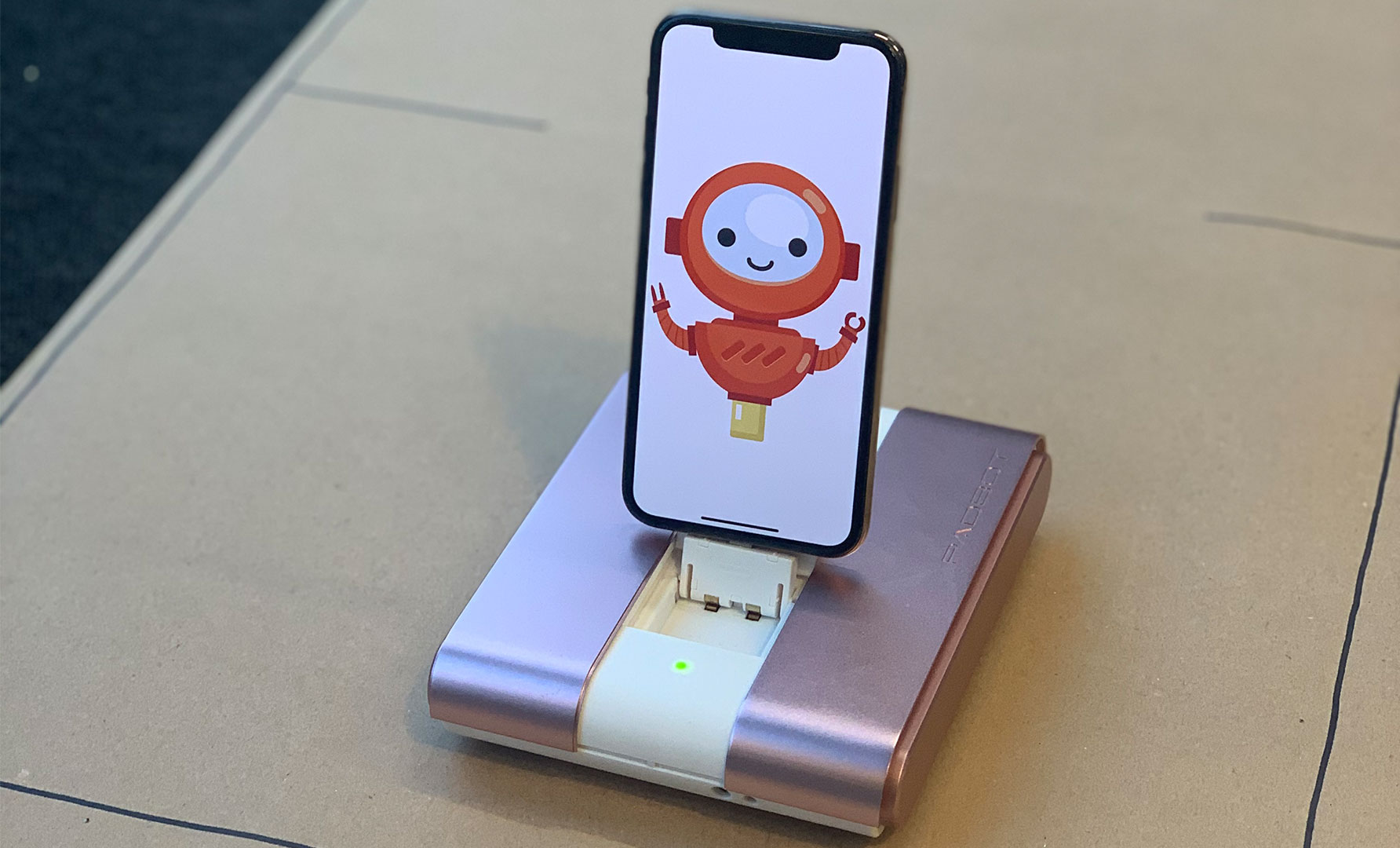
Navigator – a robot that finds its own way
The other idea is to use the Navigator as a "guide dog” for visually impaired people.
- The purpose of the Navigator is to follow its owner around, guiding him or her through unknown areas, visualize surroundings and help them with everyday tasks, says Jonathan Lindø Meling, one of the students behind the prototype.
Many people, especially the elderly, find new technology and even technology in itself as a threat. Therefore, the majority of the students wanted to make robots that could make their lives easier as well as developing robots that are easily maneuvered.
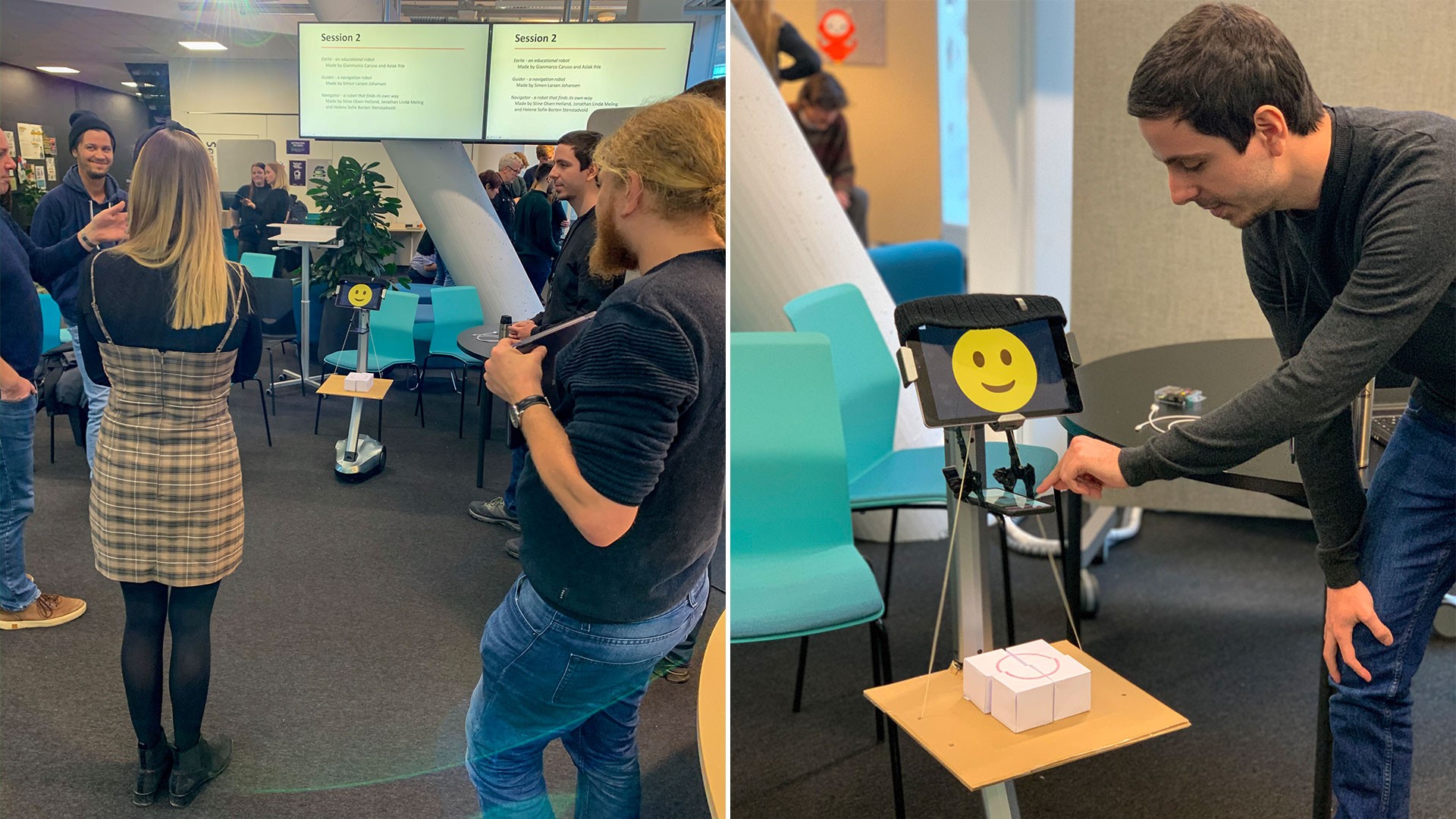 Earlie - An educational robot and empathy sparring partner for kids, demonstrated by Gianmarco Caruso (right)
Earlie - An educational robot and empathy sparring partner for kids, demonstrated by Gianmarco Caruso (right)
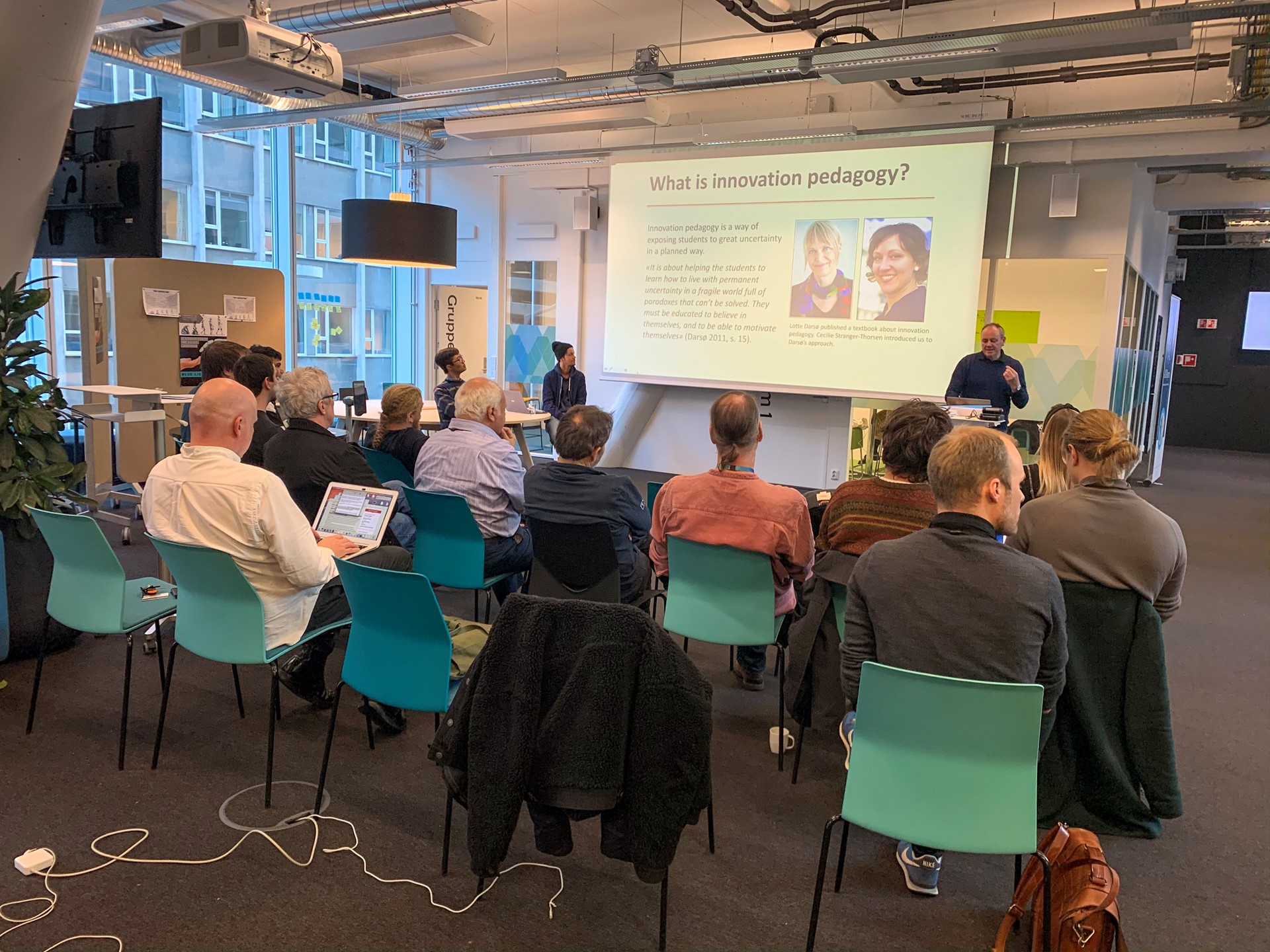
Professor Lars Nyre giving a talk on innovation pedagogy during the Demo Day. The other lecturers at the Media Technology: Theory and Development course is Duc Tien Dang Nguyen and Fredrik Jensen.
For more information about the Demo Day, check out this University of Bergen article.
